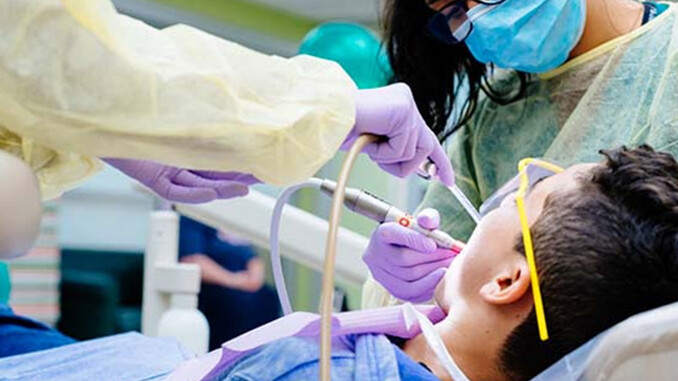
February is National Children’s Dental Health Month
Published: February 25, 2022
By: Family Features
February is an opportunity for parents and guardians of young children to explore best practices about dental hygiene and prevention strategies against dental damage.
According to the Centers for Disease Control and Prevention, tooth decay is one of the most common childhood chronic diseases. Stephen Mitchell, DMD, associate professor and pediatric dentist in the University of Alabama at Birmingham School of Dentistry, says parents play a vital role in protecting children’s smiles. Mitchell recommends building a strong foundation for good dental hygiene by helping children maintain a balanced diet, brushing and flossing each day, and ensuring regular dental checkups.
Maintain dental hygiene
According to Mitchell, brushing in the morning and before bed is key for maintaining oral health.
Proper brushing should focus on where the teeth and gums come together.“When we sleep, our mouths dry, allowing bacteria known as plaque to grow. We want to brush away as much plaque off the teeth before bed as possible,” he says.
“This is where the bacteria like to hide,” Mitchell says. “Often, you will need to pull the lower lip down so you can get the toothbrush all the way to the gums of the lower teeth.”
Mitchell recommends that parents should oversee brushing until the child develops mature hand-eye coordination, which is key to effective brushing.
“Most children are not ready to brush independently until 6-7 years of age,” Mitchell says. “Before that, let the child practice brushing; but then go behind them to really get the teeth clean.”
Another important practice is flossing, recommended at least once a day. “A toothbrush cannot reach between the teeth, so floss is the only way to remove bacteria between the teeth,” Mitchell said.
Prevent tooth decay
Dental decay is a chronic disease that happens over a long period of time, partially because of constant exposure to sugary treats. Therefore, managing consumption of sugary foods is key in preventing tooth decay.
“While brushing and flossing will help prevent tooth decay, the best way to prevent tooth decay is to limit the number of sugary foods your child eats each day,” Mitchell says.
“People often connect candy to tooth decay; but sweet drinks like juice, sodas and flavored milks seem to cause more cavities in my patients.”
Limiting sugar consumption is the most important step parents can take to reduce the risk of decay.
Artificial sweeteners like sucralose, stevia or aspartame do not cause cavities. Therefore, another way to reduce the risk of developing cavities is switching drinks to products sweetened with these types of sweeteners.“Candy in moderation is not a bad thing,” Mitchell says. “Sticky and sour candies that stay in the mouth a long time tend to be the riskiest, while chocolate that melts away quickly tends to do the least amount of damage to the teeth. But, if parents want to really reduce cavity risk, reduce sweet drinks.”
Respond to dental trauma immediately
Dental trauma is physical injury to the teeth, gums, the bone that holds the tooth sockets or the soft tissue of the mouth, including the lips and tongue.
While playing sports such as softball or baseball, the risk for dental trauma is high. Mitchell and the American Academy of Pediatric Dentistry recommend using a mouthguard in any sport that allows. If a permanent tooth is ever knocked out, time is critical.
“If the tooth can be put back in under 30 minutes, there is a better chance of a good outcome,” he said. “Placing the tooth immediately into milk extends the time considerably.”
If a child has a dental injury, call your dentist immediately.
